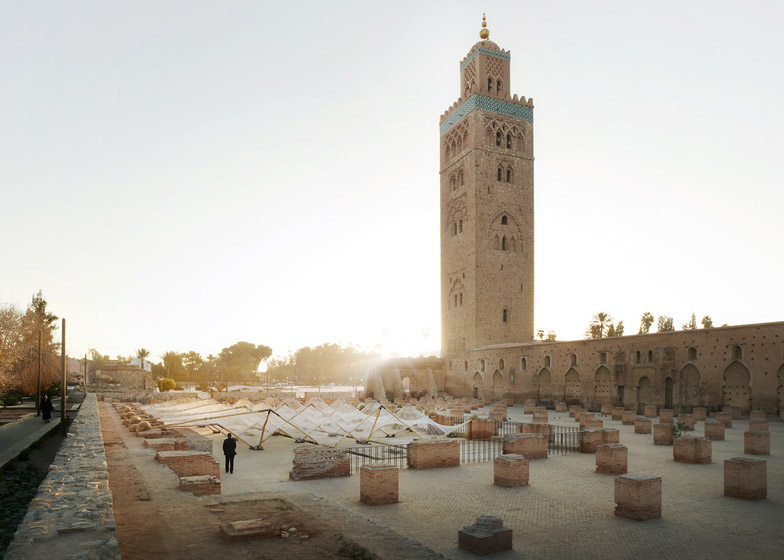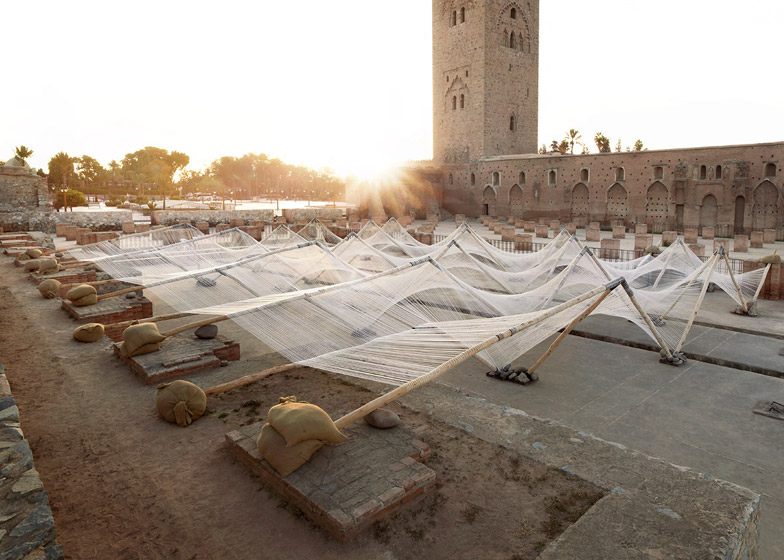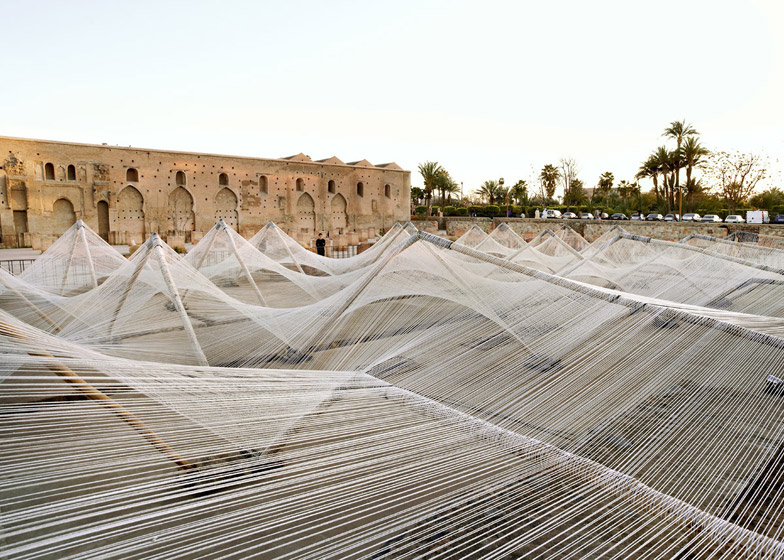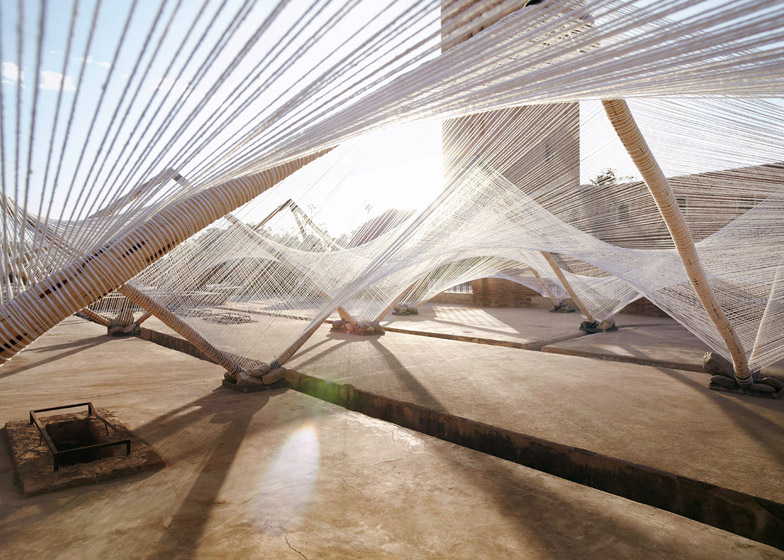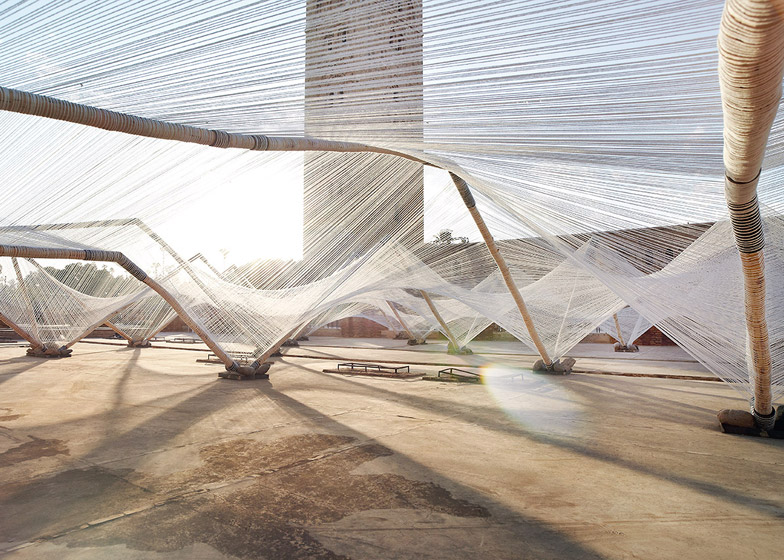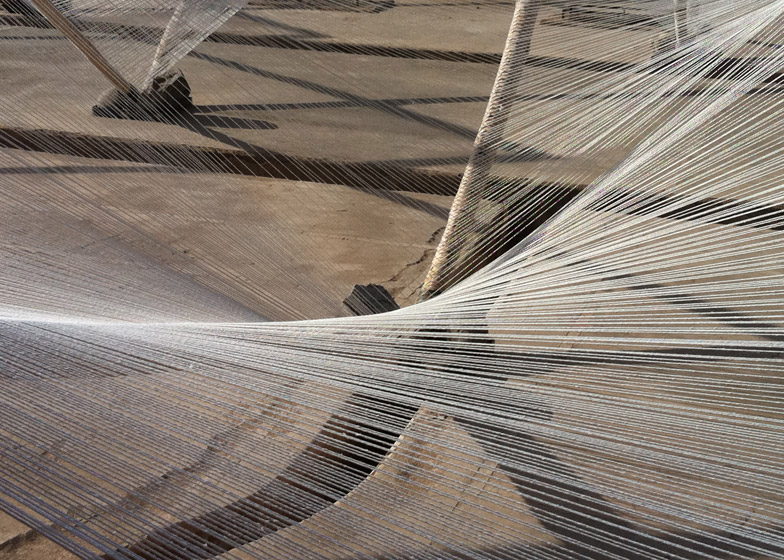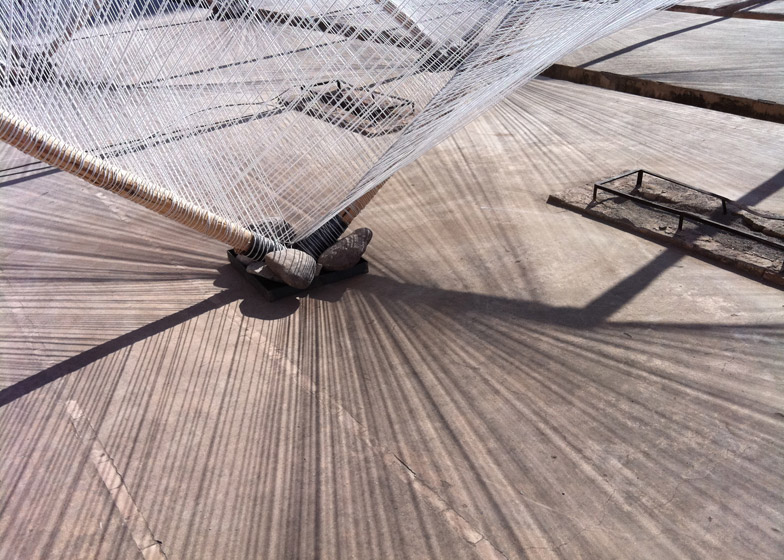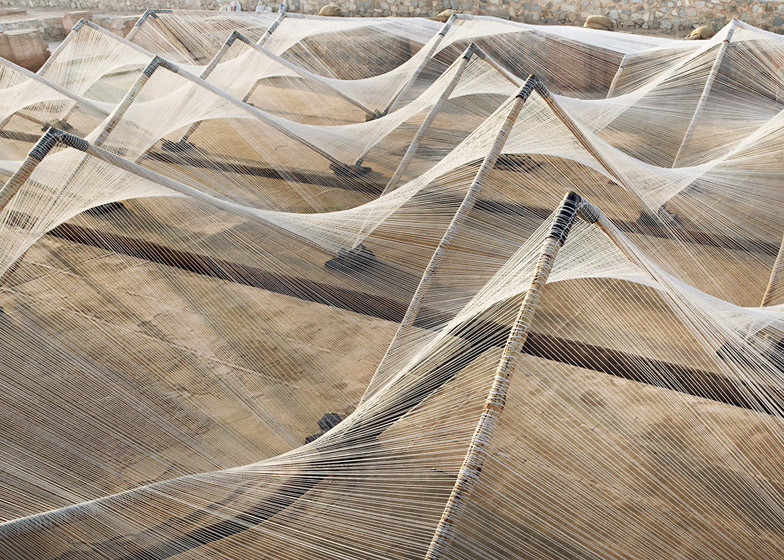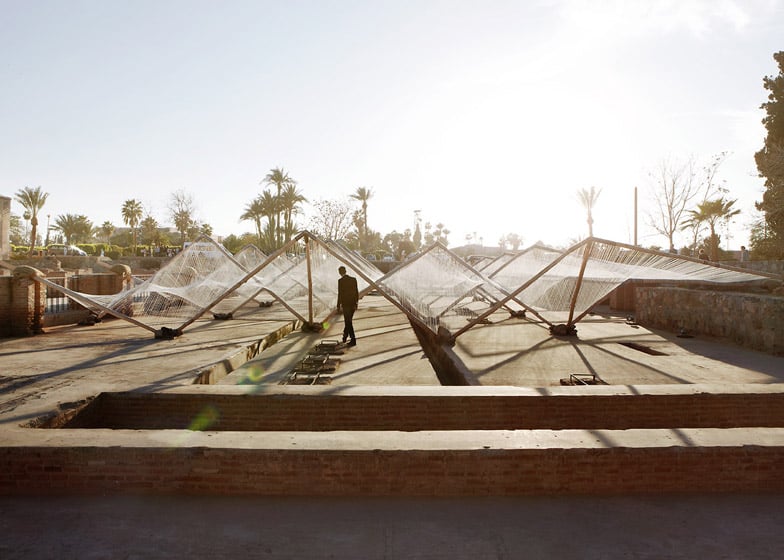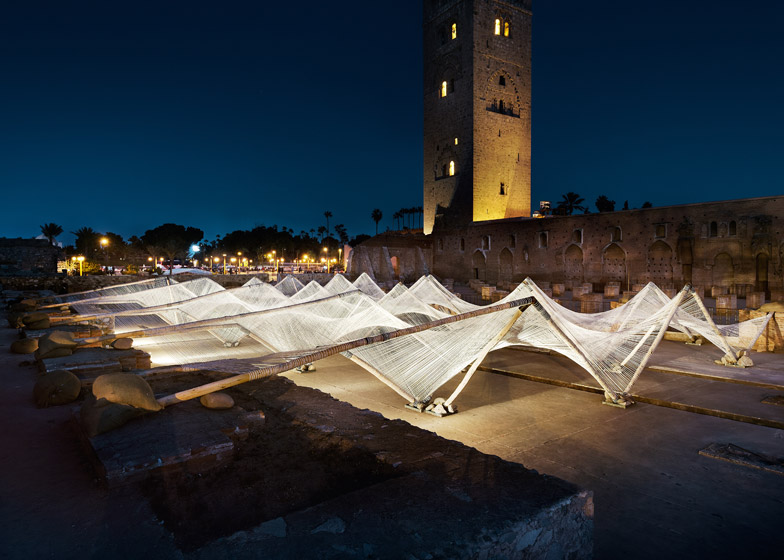Dezeen promotion: cotton was the material of choice for design studio Barkow Leibinger when forming an undulating canopy in the centre of Marrakech (+ interview + slideshow).
For the Marrakech Biennale in 2012, German-American architecture studio Barkow Leibinger stretched cotton threads between huge pine logs to form a tensile structure of hyperbolic curves in front of the city's iconic Koutoubia Mosque.
Studio founder Frank Barkow told Dezeen that cotton was chosen for the Loom-Hyperbolic installation because it was "strong and elastic enough to stretch over the pine frames".
Cotton is a soft cellulose-based fibre that forms around the seeds of cotton plants, which grow in tropical and subtropical regions around the world.
For hundreds of years, the fibres have been spun into a yarn or thread and then woven into textiles on machines known as looms.
However, designers and architects have found other uses for the material – exploiting its tensile strength and light weight properties to form impressive sculptural installations from the threads.
"Its a natural organic material that is beautiful to the eye and touch," Barkow said. "It can be easily recycled and is surprisingly strong in the application we used. Its also very light."
One of the key influences for the studio's Marrakech sun shelter was Danish designer Hans J Wegner's 1950 Flag Halyard chair, an early example of spanning threads to form surfaces.
"It was here that we discovered cotton yarn stretched over a steel tube frame – Wegner was a sailor – which formed the support surfaces for the chair," said Barkow.
Barkow Leibinger plans to continue is exploration with the material and find architectural uses for the threads.
"Cotton as a tensile material sets up a number of frame and skin projects for us that could operate at an architectural scale," said Barkow, whose studio also created a shape-shifting wall at this year's Venice Architecture Biennale.
Other uses of cotton are demonstrated in a series of films called Common Threads brought to you by Cotton Incorporated, each showing how the material provides a common thread throughout two unique lives.
Photography is by Johannes Foerster, apart from where otherwise stated.
Read our interview with Frank Barkow below:
Dan Howarth: How have you used cotton in your work?
Frank Barkow: Historically we used it conventionally, that is, as a fabric for furniture, built-ins, or for refinishing old chairs, such as Hans Wegner's incredibly beautiful Flag Halyard chair from 1950. It was here that we discovered cotton yarn stretched over a steel tube frame – Wegner was a sailor – which formed the support surfaces for the chair. This offered a strategy for our Loom-Hyperbolic installation in Marrakech for the Biennale there. Both the curator Carson Chan and the sponsor Vanessa Branson loved the idea which synched perfectly with local handcraft techniques – yarn woven through wood frame looms.
Dan Howarth: What is the material like to work with?
Frank Barkow: Very light, as yarn, and strong and elastic enough to stretch over the pine frames we built. We acquired the material locally – Egyptian cotton one of the oldest trades in this material – and brought it to the site in carts drawn by donkeys! The local boys who made up our building team were well versed with the material and could tell us how fast we could stretch the yarn and with what spacing in order to complete the installation in 2 weeks. Once finished after 5 months the yarn could easily be taken down and reused.
Dan Howarth: What qualities does cotton posses that make it interesting?
Frank Barkow: Its a natural organic material that is beautiful to the eye and touch. It can be easily recycled and is surprisingly strong in the application we used. Its also very light. In the sense that we thought of our Marrakech installation as a kind of prototype its easy to imagine it as a roof structural element which could be protected from the elements by combining it with a lightweight cladding material like wood shingles or recycled plastic shingles for rural housing.
Dan Howarth: Have cotton's historic uses influenced the way you appropriated it?
Frank Barkow: Again I would refer to Hans Wegner's Flag Halyard chair 1950 which set the stage for cotton as a spanning material to create structural surfaces. Our task was then to test the limits of how you could scale up this idea to an architectural one.
Dan Howarth: What was the reaction to the installation in Marrakech?
Frank Barkow: Well the installation was really a success in Marrakech and publicly and somehow strong and legible as a concept to both visitors as well as to the local population who equally appropriated the site as a place for encounter or simply to hang out.
Dan Howarth: Are there any other examples of cotton used in design that you particularly admire?
Frank Barkow: I still think the Levi 501 Jean from 1872 by Jakob Davis and Levi Strauss is a work of engineering genius. By combining riveted joints with a metal button fly joint an incredibly robust piece of work clothing was produced. The cotton was a nine-ounce XX blue denim from the Amoskeag Mill in Manchester, New Hampshire. This is one of the most beautiful and weathering, fading materials in the world I can think of. The Two Horse Brand – two horses shown on the patch of the jeans trying to pull them apart – was a testimony to the material's and fasteners strength. If Le Corbusier admired America for its industrial architecture of the last century – silos and grain elevators – in Vers une Architecture, cotton denim is the clothing equivalent to this concept.
Dan Howarth: Do you plan to continue to use cotton in future projects? What are your plans?
Frank Barkow: We are always open and on the search for new applications as a research-based practice. As mentioned above cotton as a tension materials sets up a number of frame and skin projects for us that could operate at an architectural scale. If you imagine the Wegner chair at the scale of, say, a pavilion then I would say that is the next project.
Dan Howarth: Have you worked on any other similar projects recently?
Frank Barkow: The Kinetic Wall installation we did for Rem [Koolhaas] for the Venice Biennale this year uses a synthetic fabric as a stretchable skin activated by the motors and telescoping tubes. This is a concept that would lend itself well for layered cotton scrims that are elastic and produce a moiré effect when moving over each other.

